Thailand: Hala Bala, 2010
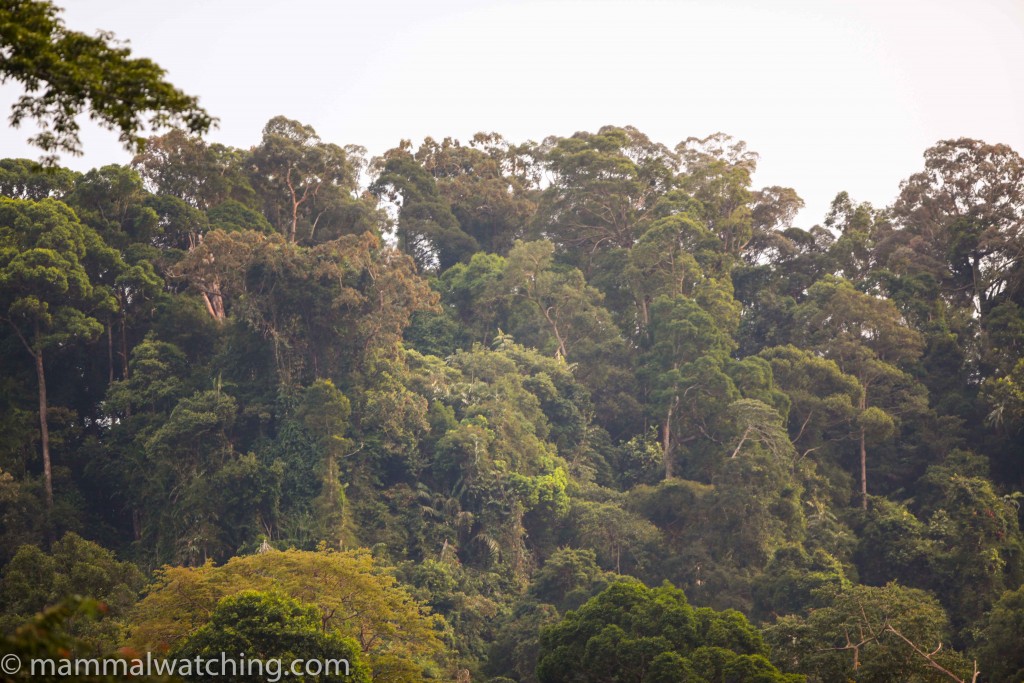 In October 2010 I took advantage of a work trip to Malaysia to hop over the border to spend four nights in Hala Bala, one of my favourite national parks in South East Asia. My friends, and Thai naturalists par excellence, Tu and Jan, first introduced me to the park. As always when I am in Thailand they arranged this trip and came with me. We rendezvoused in the Thai/Malay border town of Songai Kolok, a 45 minute cab ride from Malaysia’s Kota Bharu airport.
In October 2010 I took advantage of a work trip to Malaysia to hop over the border to spend four nights in Hala Bala, one of my favourite national parks in South East Asia. My friends, and Thai naturalists par excellence, Tu and Jan, first introduced me to the park. As always when I am in Thailand they arranged this trip and came with me. We rendezvoused in the Thai/Malay border town of Songai Kolok, a 45 minute cab ride from Malaysia’s Kota Bharu airport.
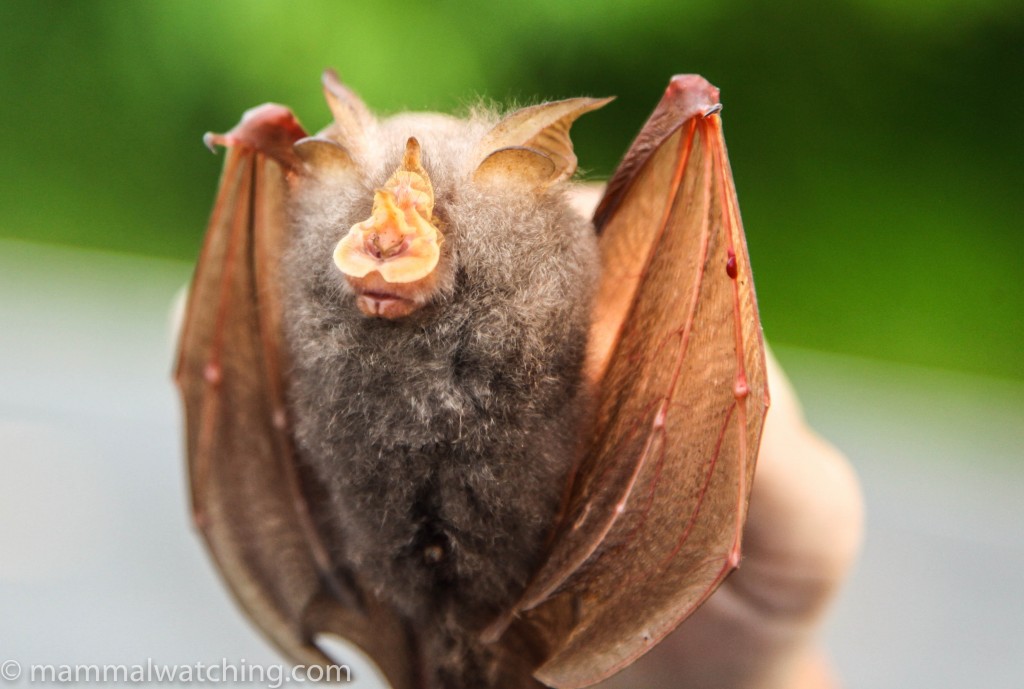
Trefoil Horseshoe Bat, Rhinolophus trifoliatus
Hala Bala is paradise. It is quiet, picturesque, has hot showers and flushing toilets and a very friendly staff of researchers who go out of their way to help me find stuff, including setting traps and catching bats.
It is an excellent, if fairly small, piece of rainforest that straddles a mountain with a small research station manned by a team of biologists. The public do not normally stay there: partly because it isn’t run as a tourist camp and – more recently – because the Islamic separatists in Narathiwat province have put people off travelling here. There has never been any trouble in Hala Bala, and the only evidence I have ever seen of the problems in my three visits here are the frequent military checkpoints. Tu spent two years studying hornbills in the area so has all the right connections to set up a visit at a minimal cost. The park is run on a shoestring budget so visits like mine can really help.
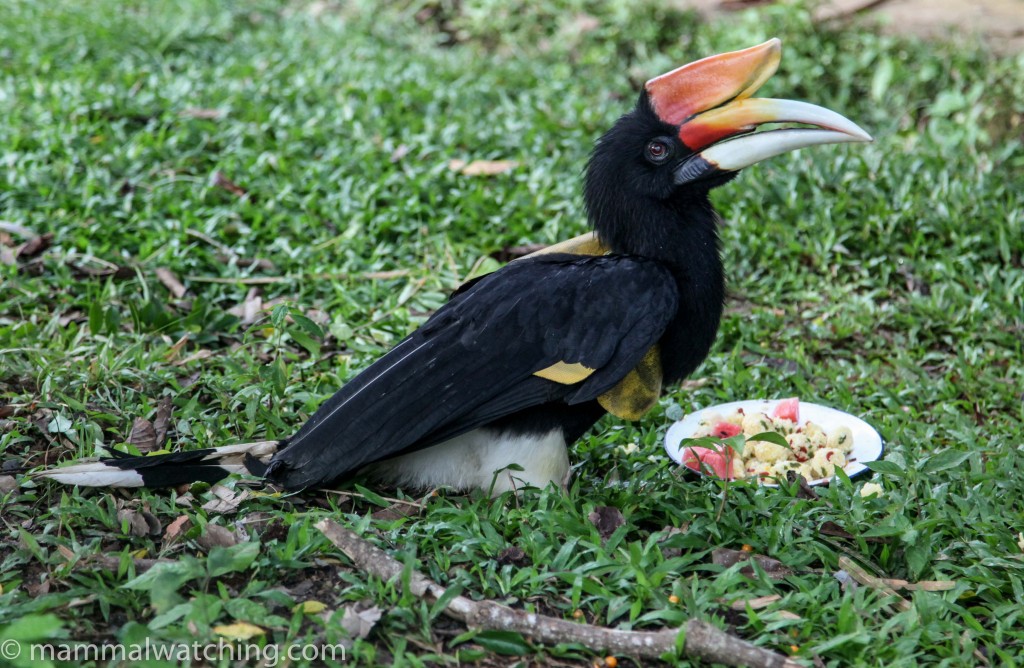
Hornbill
Hala Bala is most famous for its hornbills but it is home also to some impressive mammals (see my other reports for details). The park staff are equally impressive and will go out of their way to help you find your target species, or at least they do when Tu asks them. Last time they constructed a hide so I could look for Short-clawed Otters. This time they constructed a tree platform so I could look for the much rarer Hairy-nosed Otters.
Hairy-nosed Otters are an enigmatic species, often described as the rarest otter in the world. am not sure if they are the rarest (I think that both Marine and Southern River Otters may claim the same status from time to time), but I am not aware of anywhere where they are easy to see, unlike the two rare South American species. There seems to be a reasonable population in the swamp forest near Hala Bala but it is a more difficult habitat to travel through and observe otters in than the rivers, lakes and coastline used by other species.
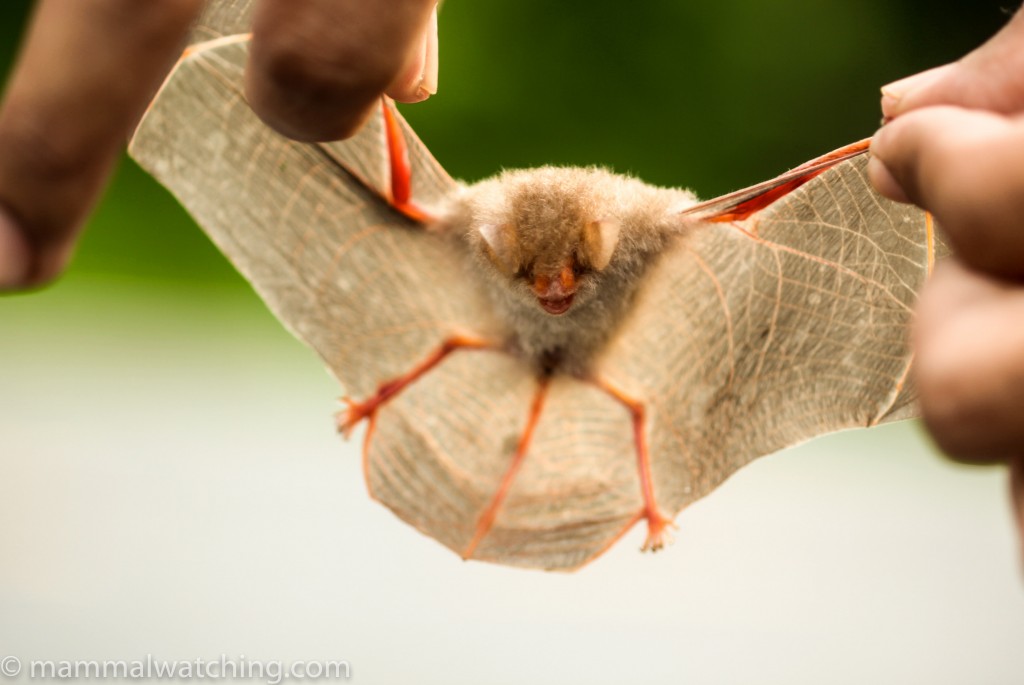
Clear-winged Woolly Bat, Kerivoula pellucida
Phru Chalaemprakait Wildlife Sanctuary, a swamp forest 90 minutes drive from Hala Bala, is home to about 20 animals and they have been studied since 2005. Tu asked his friends at the park to build a viewing platform and stake out the area before I arrived. Just before I got there they saw otters on two of the three days, twice each day. And they had some amazing photos to prove it – the otters regularly visit a fish trap on the edge of the swamp, less than 30 metres from the hide.
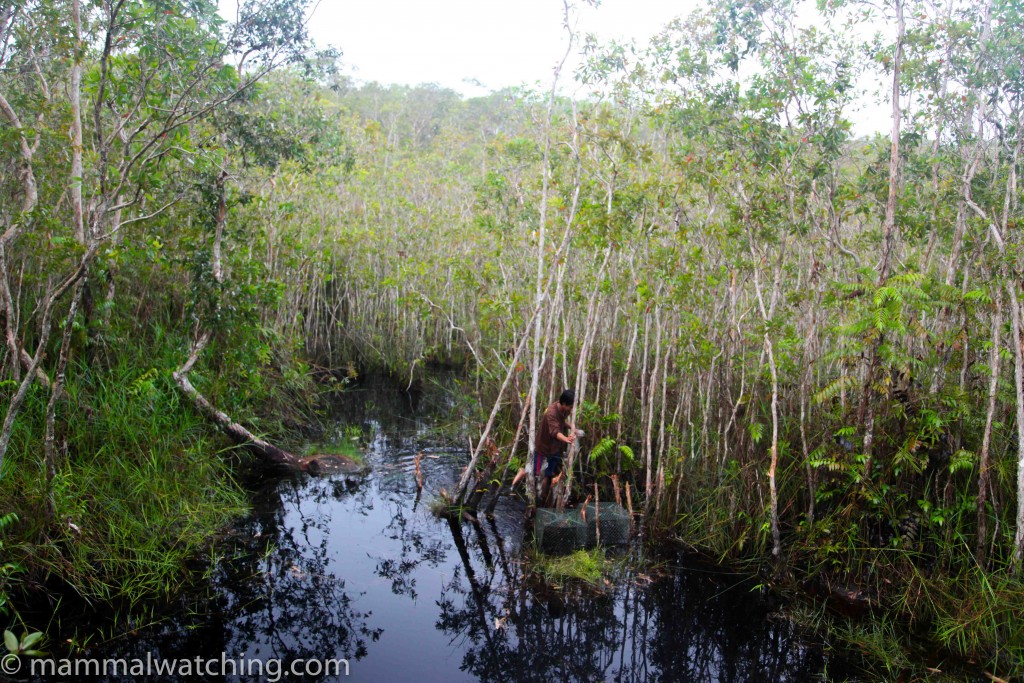
The view from the hide
We visited the hide from 7 a.m. – 4 p.m. on Sunday and Monday and from 6 a.m. to 6 p.m. on the Tuesday. It wasn’t comfortable … to say the least. It was about 40C inside Tu’s little camouflage tent on the platform, very humid, and I don’t think I have ever sat on such an uncomfortable camping stool. It was a strangely hypnotic 30 hours, spent concentrating, trying to concentrate, sleeping, and beating my high score on my Blackberry’s Brickbreaker game.
Mr Natt from Hala Bala had been on otter watch before I arrived. He had seen the otters two days running at 8 a.m. and midday so it wasn’t until the last – desperate – day that we arrived at dawn and departed at dusk. Camera trapping work in the reserve suggests the otters are not often active at night.
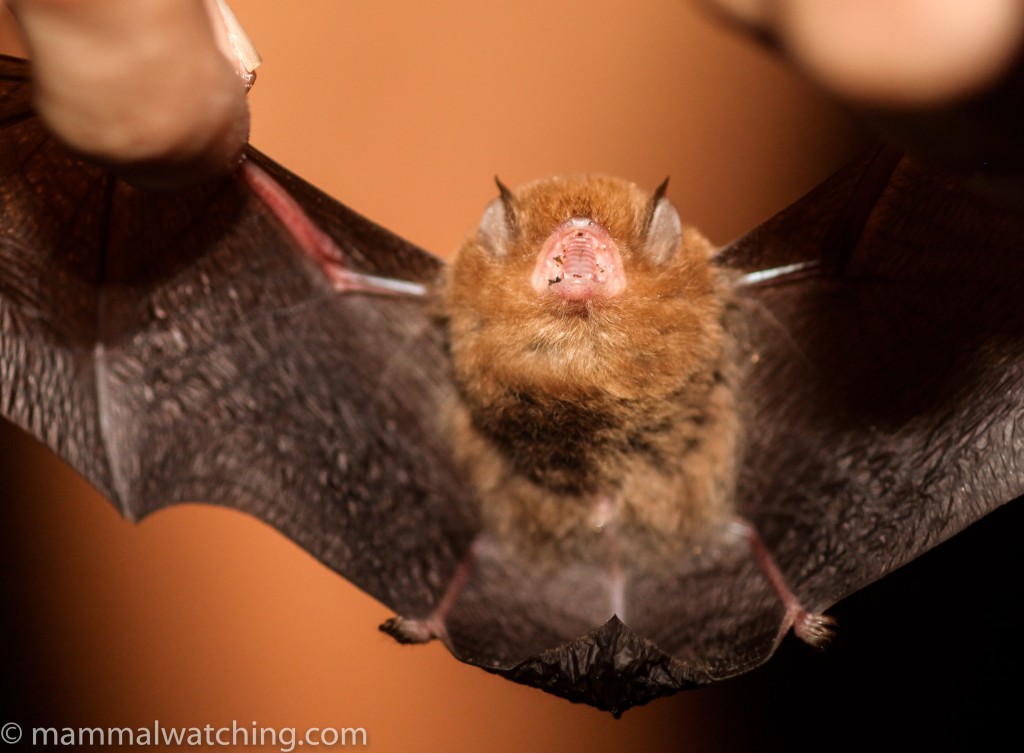
Least Woolly Bat, Kerivoula minuta
After seeing a couple of Banded Squirrels, I abandoned hope during the late afternoon of our last day and we were set to leave at sunset. Half an hour before sunset Tu whispered “otter!” and I spent a frustrating 15 minutes trying to get a glimpse of apparently three Hairy-nosed Otters. Tu got a first good view of the face of an animal while it spy-hopped right in front of the hide. All I managed was a glimpse for less than one second of an animal’s head breaking the surface before it went down below the fish trap (which we had stocked) and began pulling the trap from below. We heard and saw movement in the grass behind the hide but we didn’t see the animals.
So an unsatisfactory glimpse of a very cryptic animal. But at least it was a glimpse. There are no other otter species in the park, and if I was to try again I would be sure to arrive at dawn and leave at dusk as these are probably the best times to look and also the most comfortable times to be in the hide. Actually if I went again I would plan to spend five days looking for them but then do other things until the last 30 minutes of my fifth day! Why does it happen so often like that?
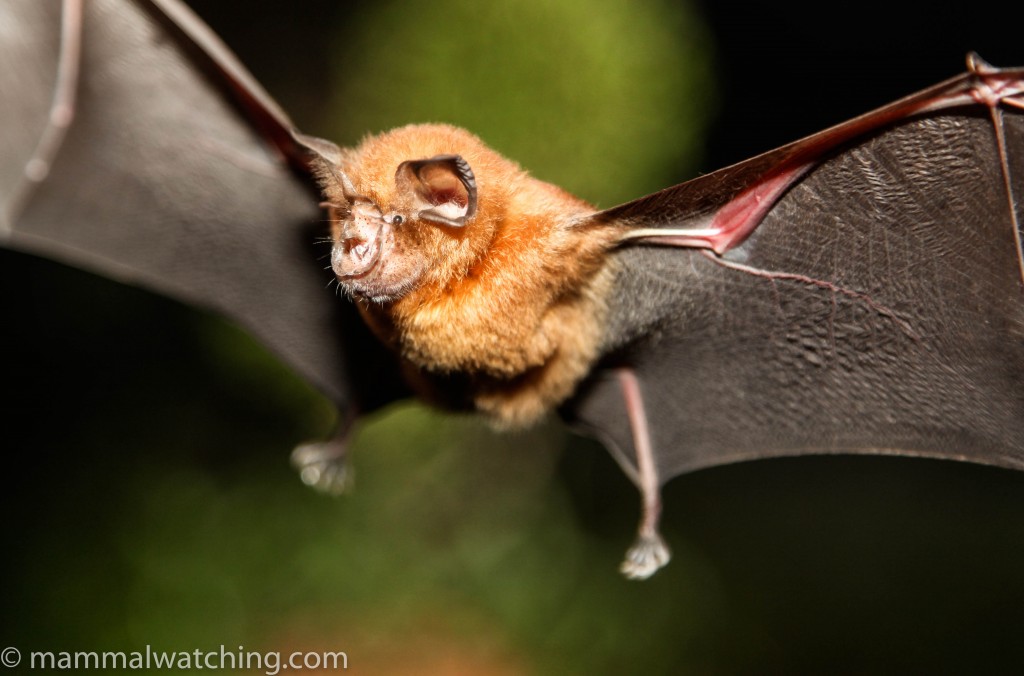
Intermediate Horseshoe Bat, Rhinolophus affinis
Back in the park, the big news was that they had been given a harp trap so there were some exciting bat catching possibilities: Hala Bala is home to nearly 60 species of bats! The first night was disappointing: just an Intermediate Horseshoe Bat and my first Clear-winged Wooly Bat, a wonderful little thing with semi-transparent wings.
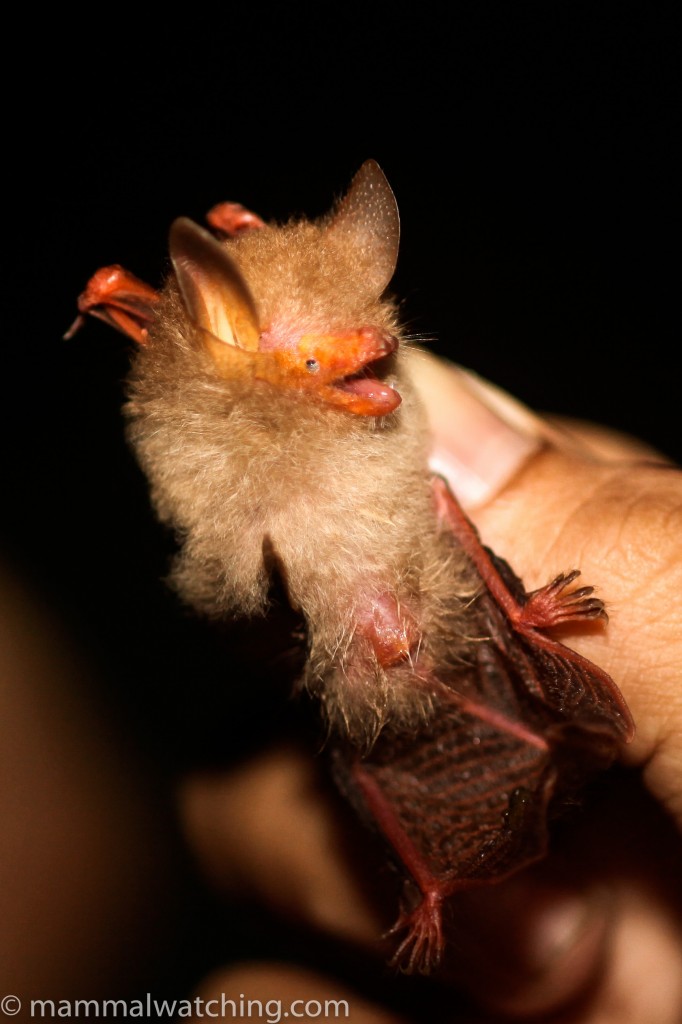
Clear-winged Woolly Bat, Kerivoula pellucida
On the second night, with the trap in what looked like a much better place (indeed at this location Tu has seen them pull 30 bats from the trap in a night), we did not do much better. We caught a couple of Bicolored Roundelay Bats, though apparently there are two distinct species in the park which can only be separate from echolocation calls.
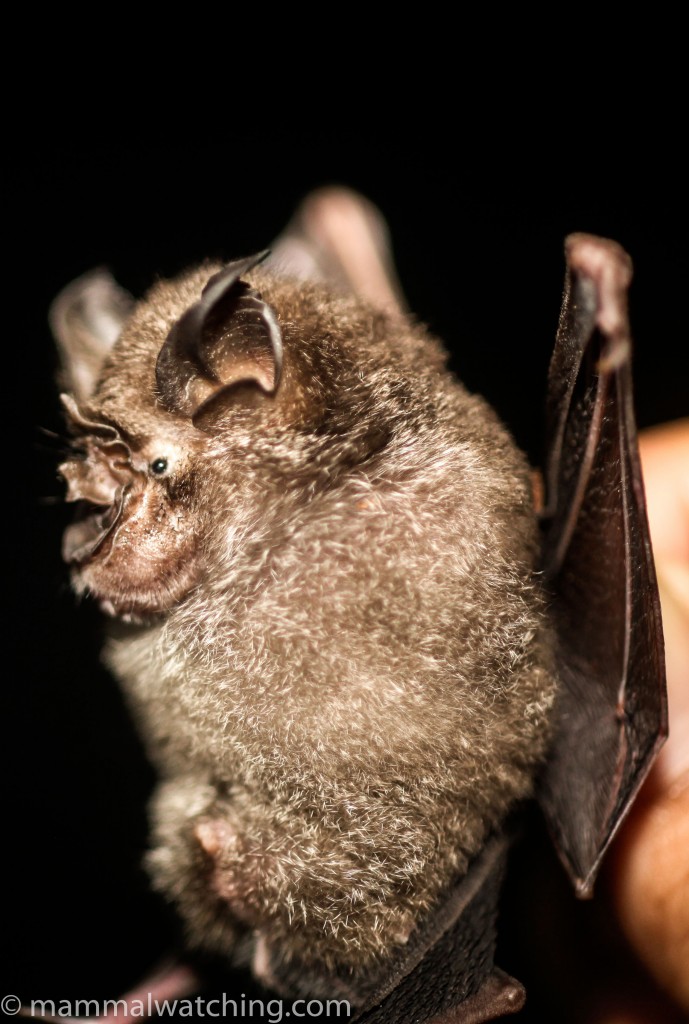
Acuminate Horseshoe Bat, Rhinolophus acuminatus
As well as my first Acuminate Horseshoe Bat, which has a very powerful and unpleasant scent up close. But then again after 12 hours in the hide so did I … and also from a distance probably.
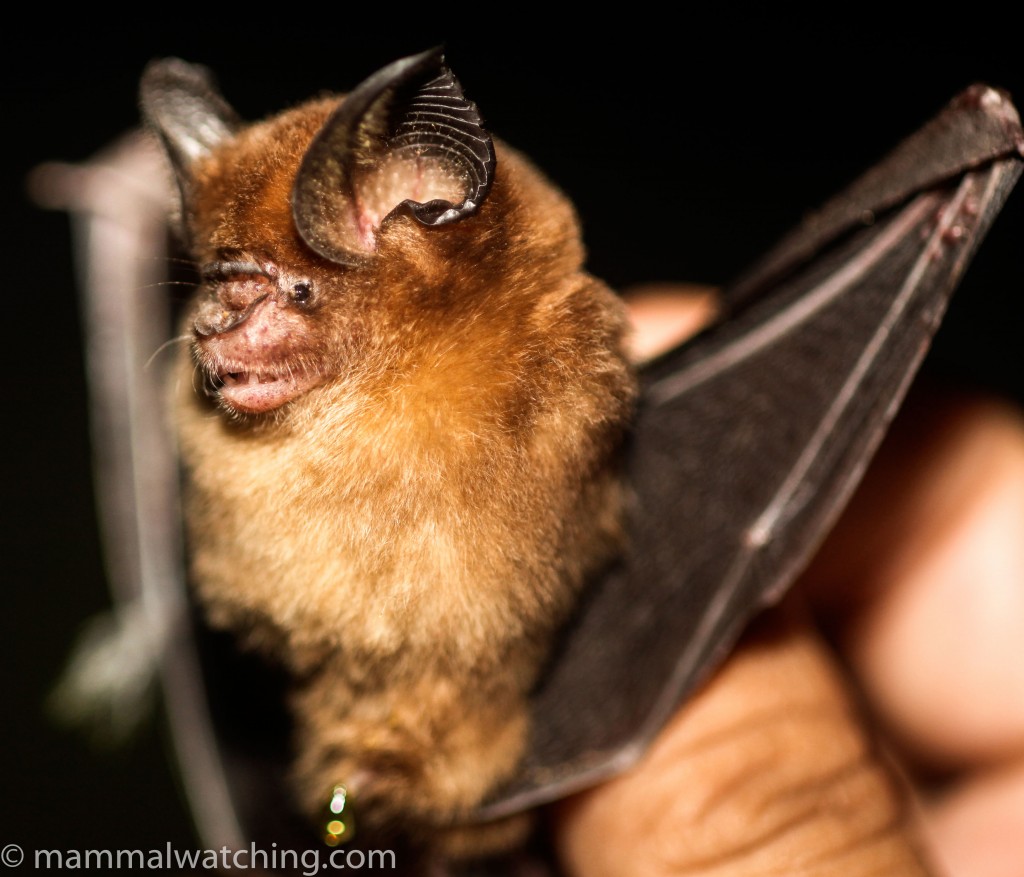
Bicolored Roundleaf Bat, Hipposideros bicolor
On the last night, with the trap in another location, we did better. We caught several tiny Least Woolly Bats (another lifer).
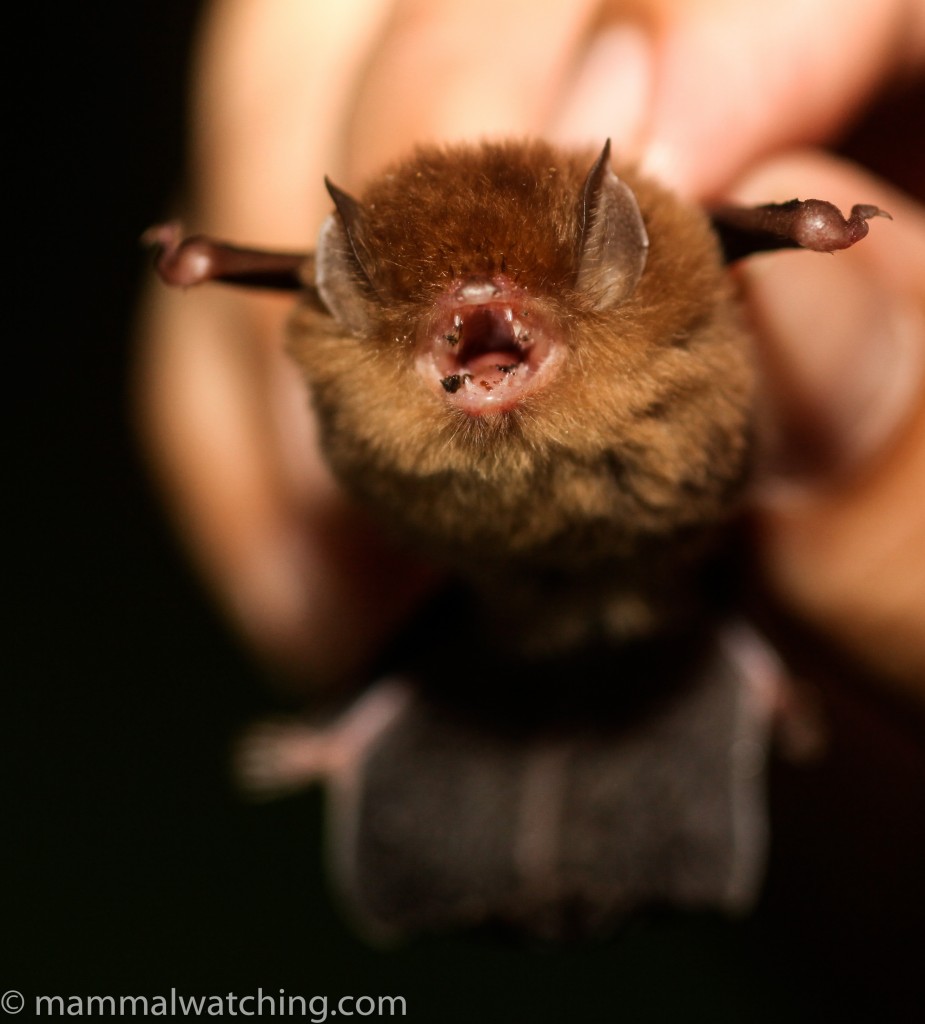
Least Woolly Bat, Kerivoula minuta
Followed by more Bicolored Rounlead Bats and an impressive Diadem Roundleaf Bat (I wonder if these might eventually be a different species to those in Australia?).
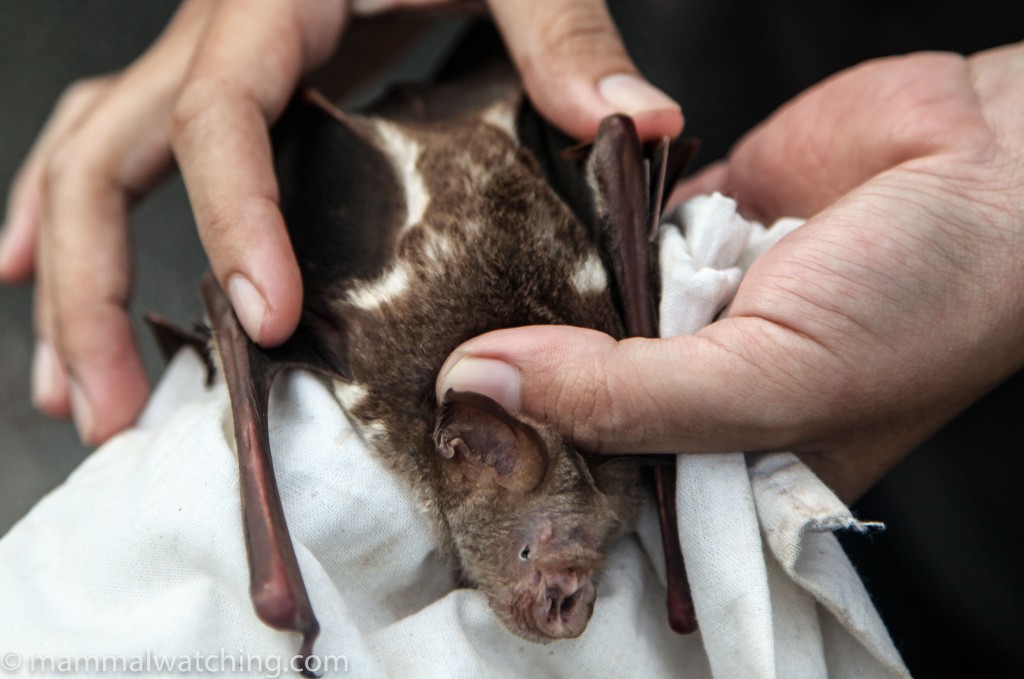
Diadem Roundleaf Bat, Hipposideros diadema
We also caught a very distinctive Trefoil Horseshoe Bat (another lifer) and another Clear-winged Wooly Bat.
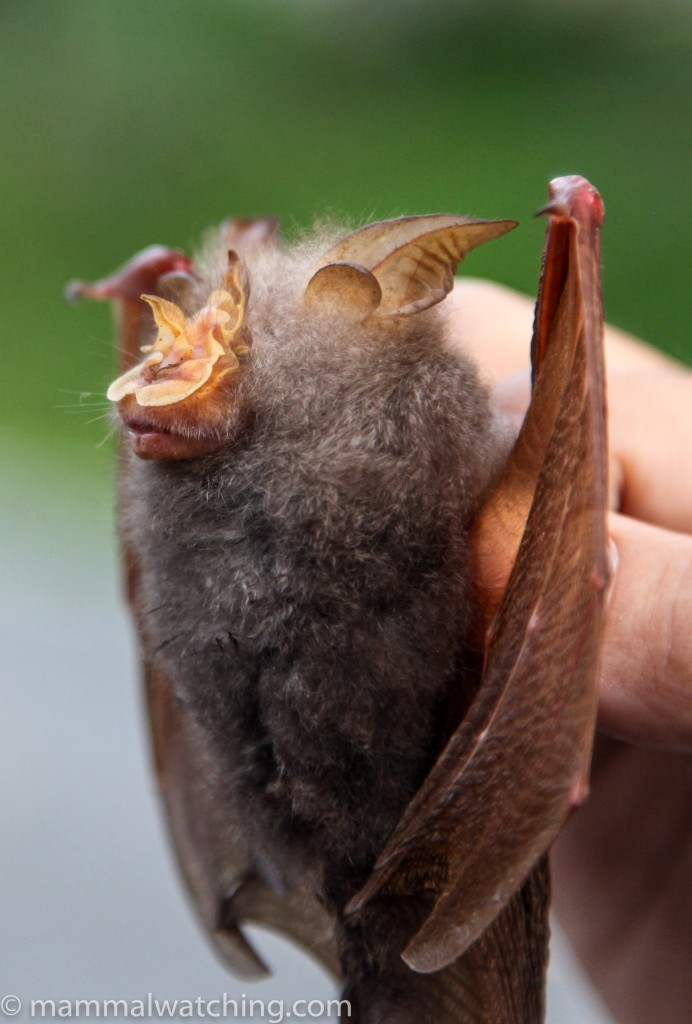
Trefoil Horseshoe Bat, Rhinolophus trifoliatus
My main focus during my stay were the otters: we drove around at night twice though I wasn’t putting in a great deal of effort. We spotted Common, Masked and Small-toothed Palm Civets, Red Giant Flying Squirrels and a Leopard Cat. Dusky Langurs were common around the park HQ, and we heard Agile Gibbons calling at night (after our spotlight disturbed them). My other trip reports for Hala Bala (from 2004 and 2008, see below) give more information on other mammals I have seen here.
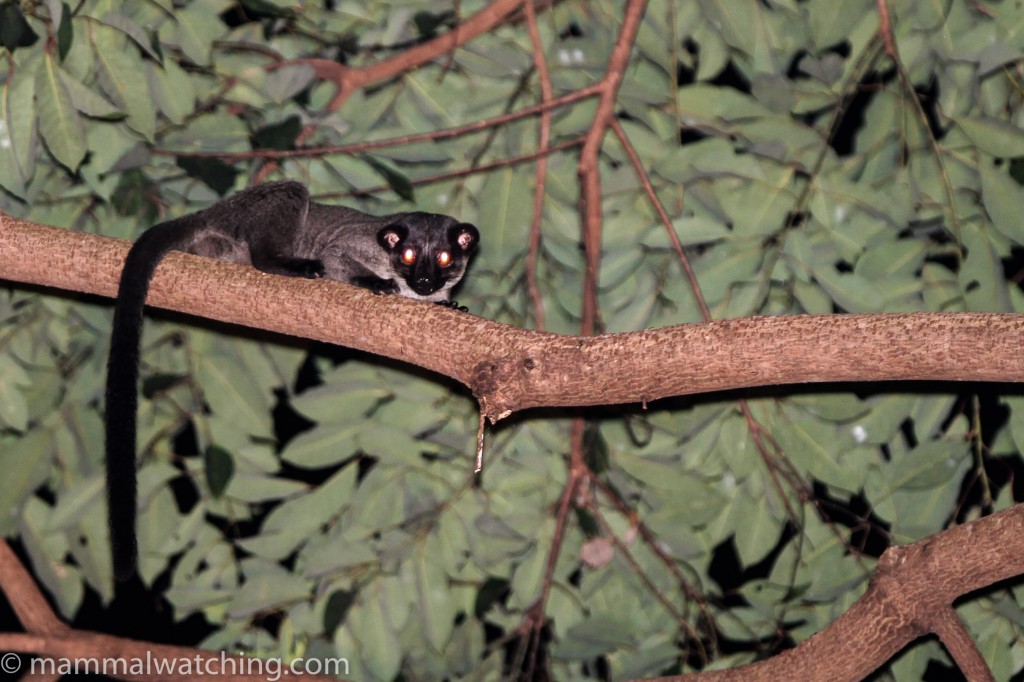
Small-toothed Palm Civet, Arctogalidia trivirgata
If we had seen the otters more quickly then I would have also spent some time on a new platform in the park from which Southern Serow and Fea’s Muntjak are sometimes seen coming to drink. Next time … because I do plan to return again to catch some more of the Parks 56 bat species.
I am tempted to say it is a pity that more people don’t visit Hala Bala. Hopefully the security situation in Narathiwat will improve and more will come. But then again part of the reason the park is such a fabulous place is because so few people do visit, and when you do the researchers will indulge you in as many mammals as they can.
As always a big thank you to Tu and Jan for looking after me so well and working so hard to find the mammals I want to see. I wish I knew people like them in every country.
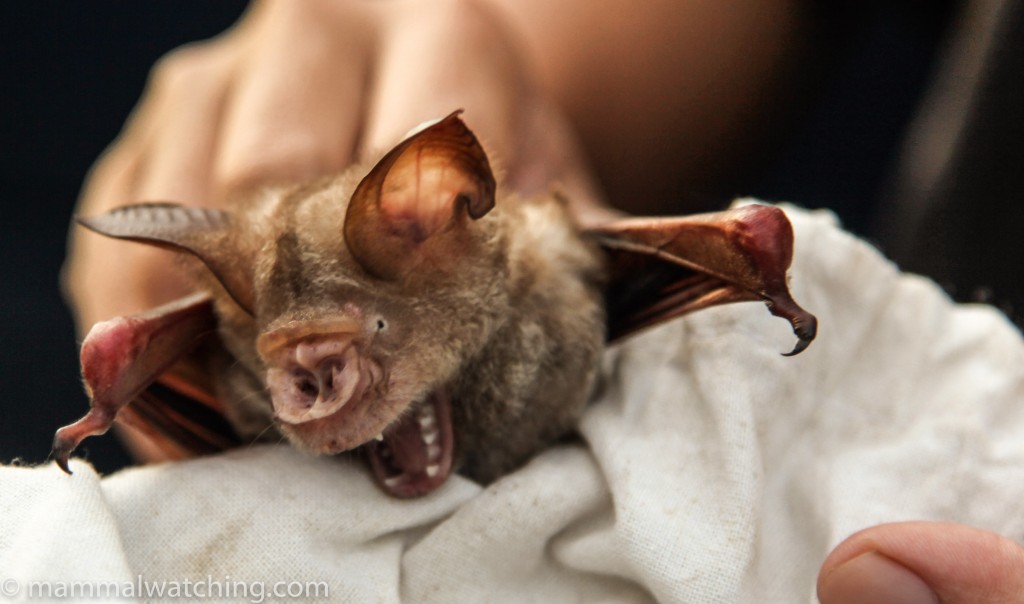
Diadem Roundleaf Bat, Hipposideros diadema
Trip List
F Hairy-nosed Otter Lutra sumatrana
F Least Woolly Bat Kerivoula minuta
F Clear-winged Woolly Bat Kerivoula pellucida
F Trefoil Horseshoe Bat Rhinolophus trifoliatus
F Acuminate Horseshoe Bat Rhinolophus acuminatus
Diadem Roundleaf Bat Hipposideros diadema
Bicolored Roundleaf Bat Hipposideros bicolor
Intermediate Horseshoe Bat Rhinolophus affinis
Red Giant Flying Squirrel Petaurista petaurista
Small-toothed Palm Civet Arctogalidia trivirgata
Masked Palm Civet Paguma larvata
Asian Palm Civet Paradoxurus hermaphroditus
Leopard Cat Felis bengalensis
Dusky Leaf Monkey Trachypithecus obscurus
Agile Gibbon Hylobates agilis (heard)
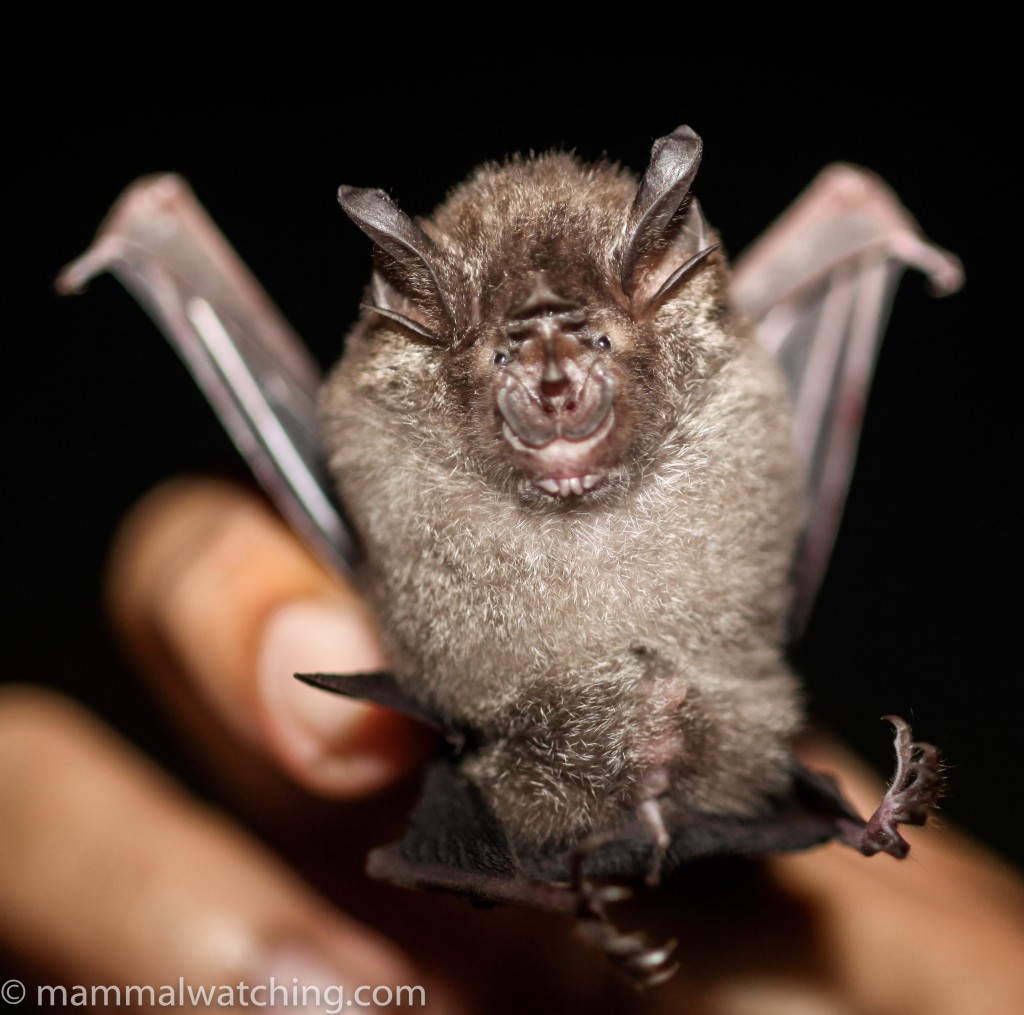
Acuminate Horseshoe Bat, Rhinolophus acuminatus


Leave a Reply
You must be logged in to post a comment.